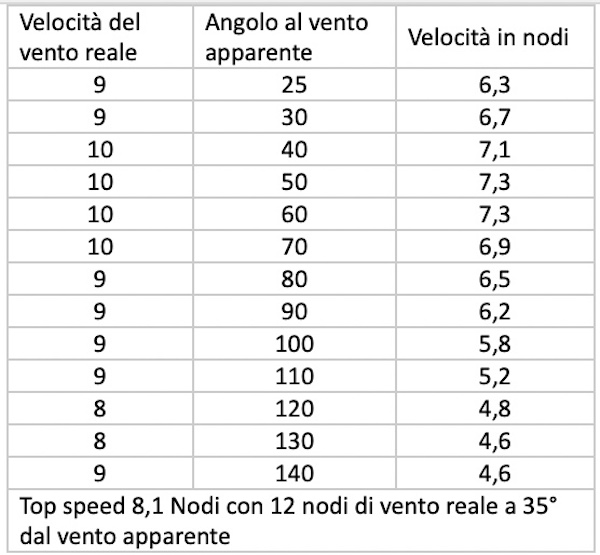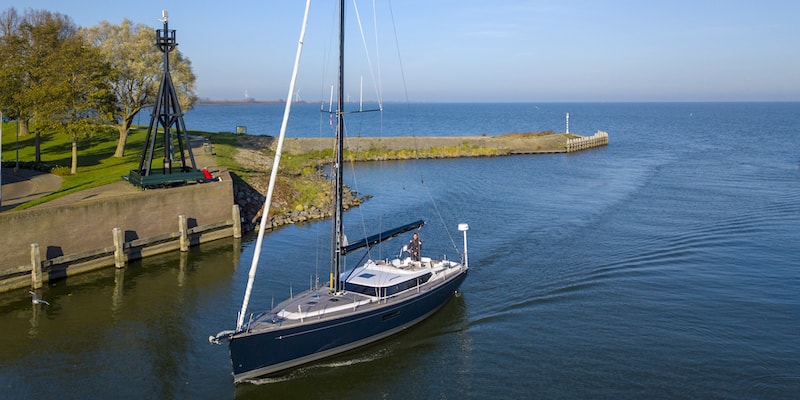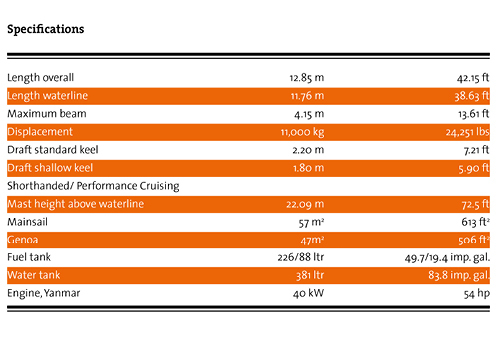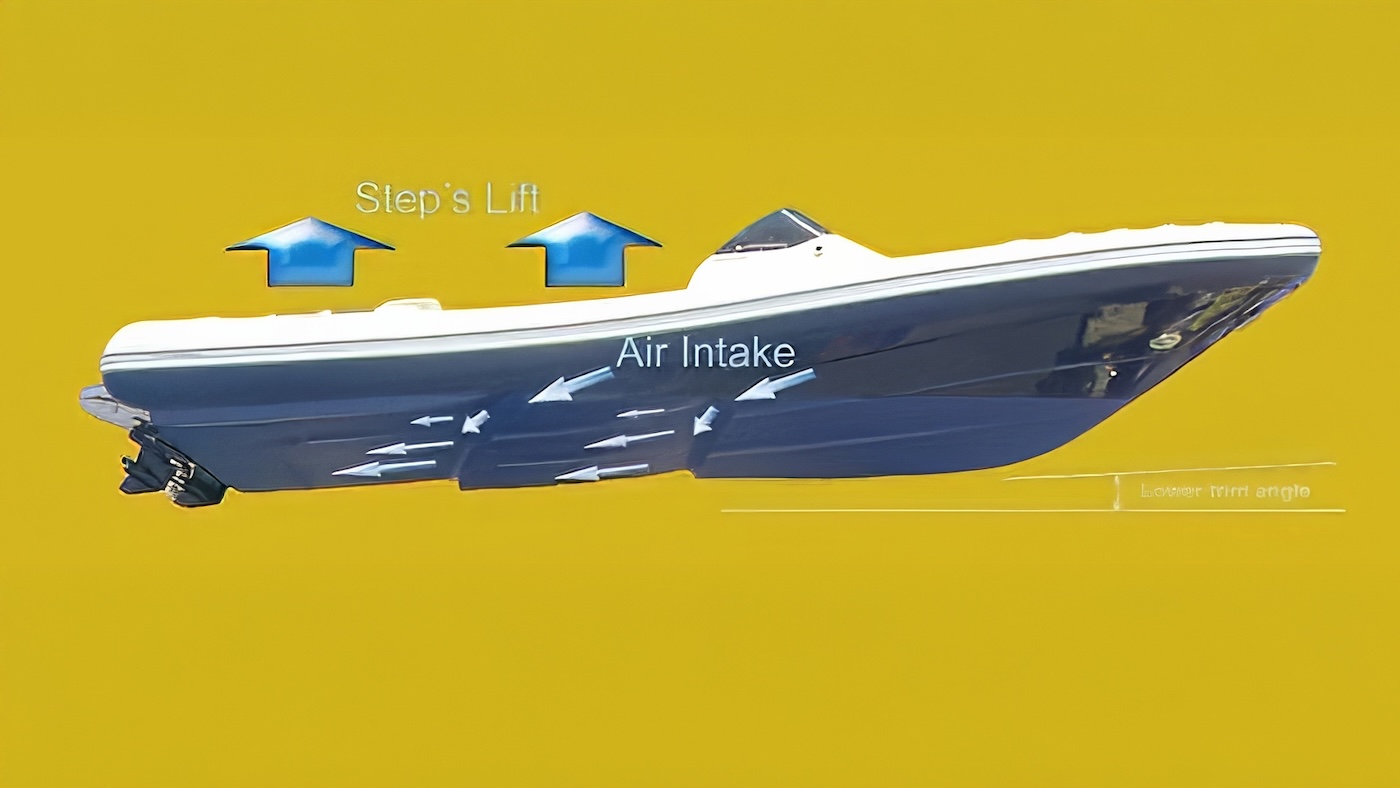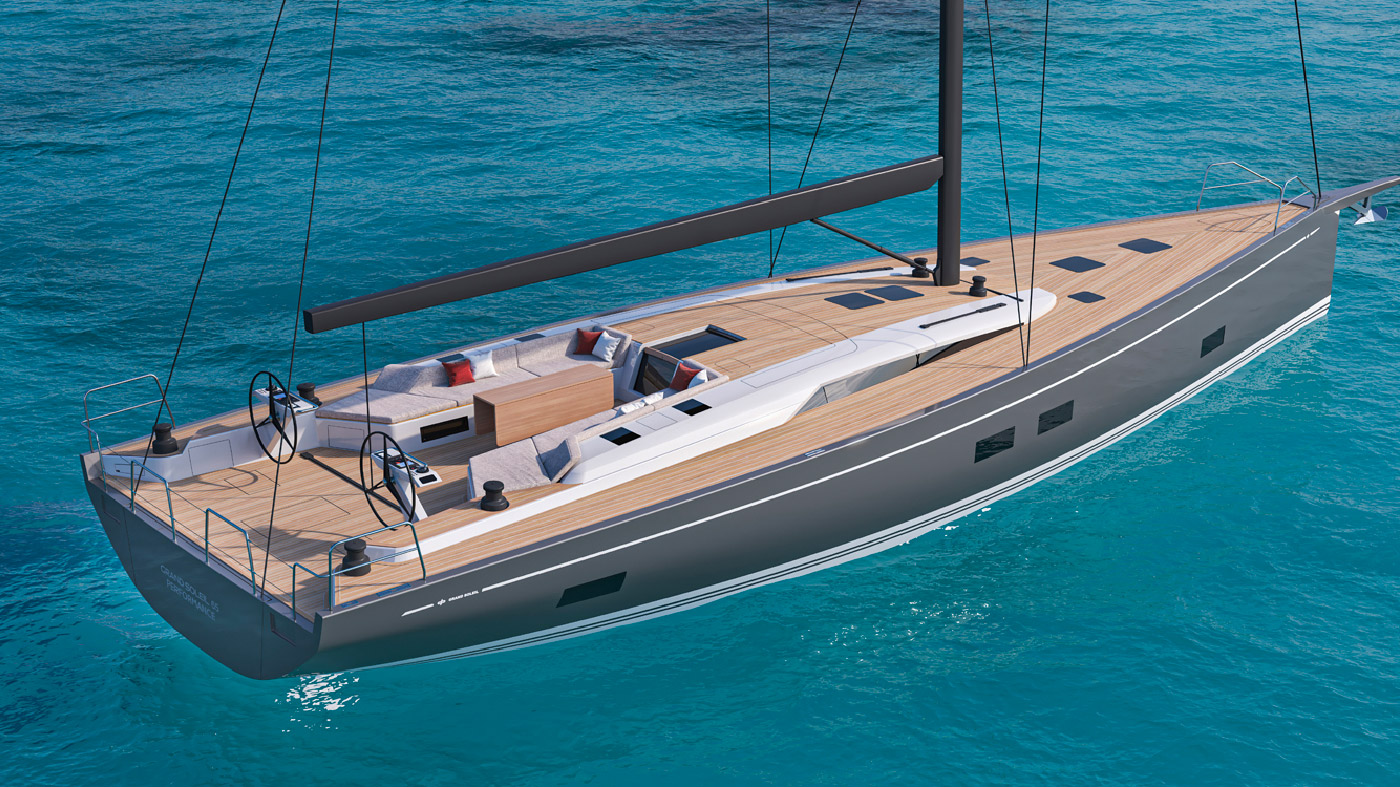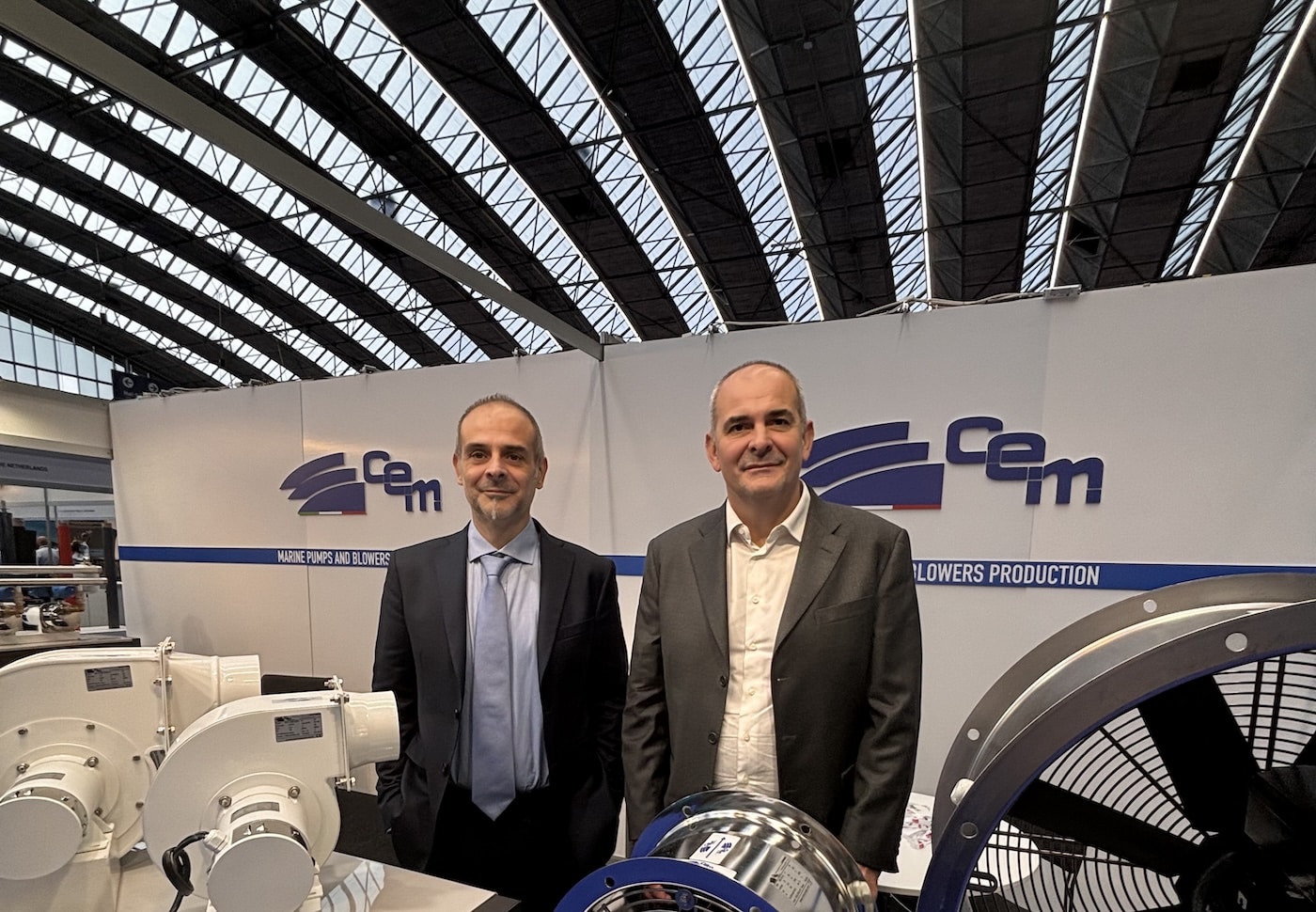The Contest 42CS is the 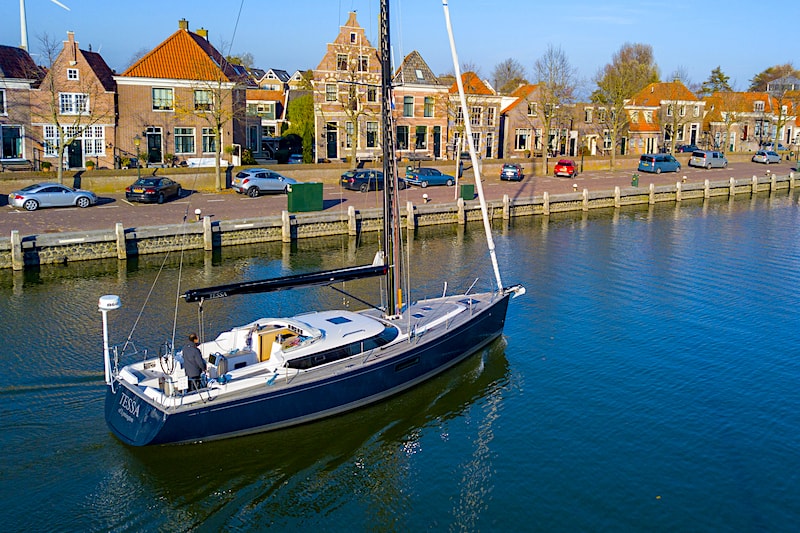
To fully understand such a big statement, that we cannot refrain from justifying, we must must be able to explain you the reasons why.
When assessing a sailboat, you should never overlook its construction, the way it sails and, last but not least, the capacity of the shipyard to design yachts that can make your heart beat at first glance.
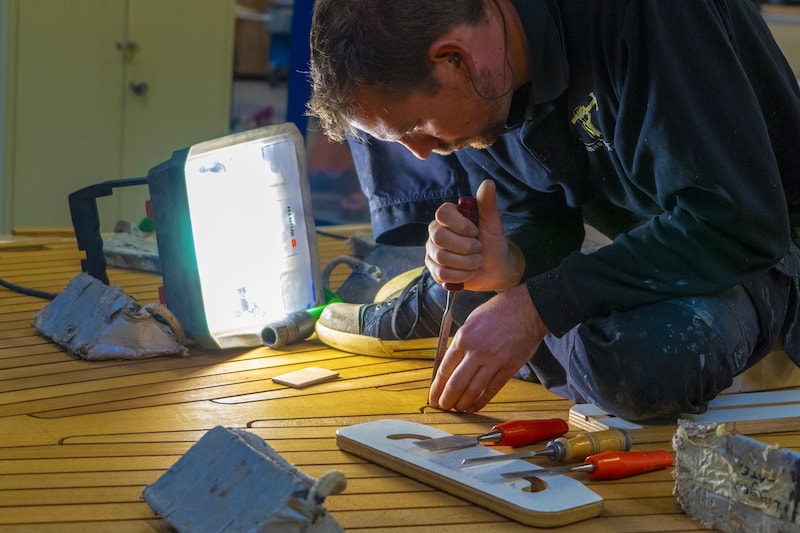
After all, this is not surprising if we consider that the boat we have tested is 4 years old and, both in the port and at sea, it has never made any crunches and has no imperfections at all, even if you try to find them with a magnifying glass.
You can therefore fully understand how anxious I was to climb on board this “Stradivarius of the sea”.
Contest 42CS Sea Trial
To sail in the North-East 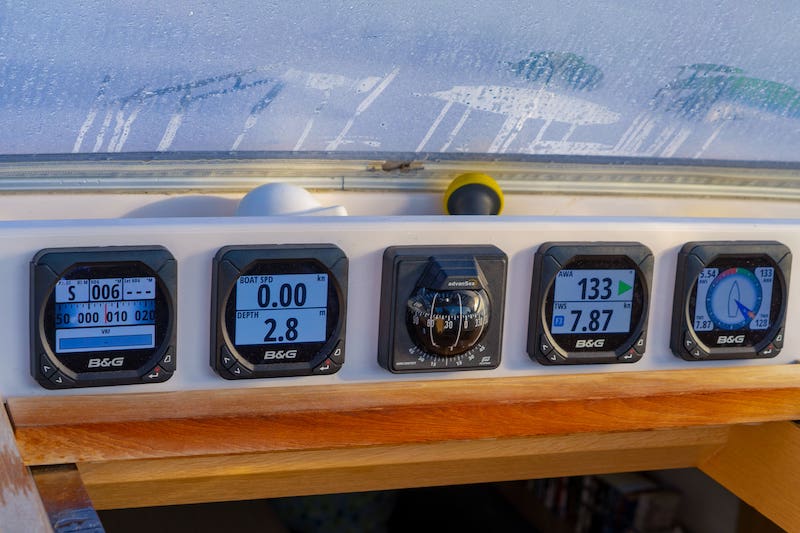
Sure, temperature is low – about 3-4 degrees – but the large hood of the Contest offers a more than sufficient shelter in order not to feel too much cold.
The engine of the Contest 42CS is barely audible while, slowly motoring, we approach the sluice of the dam that, recovering two meters of drop, will lead us to the sea-level basin.
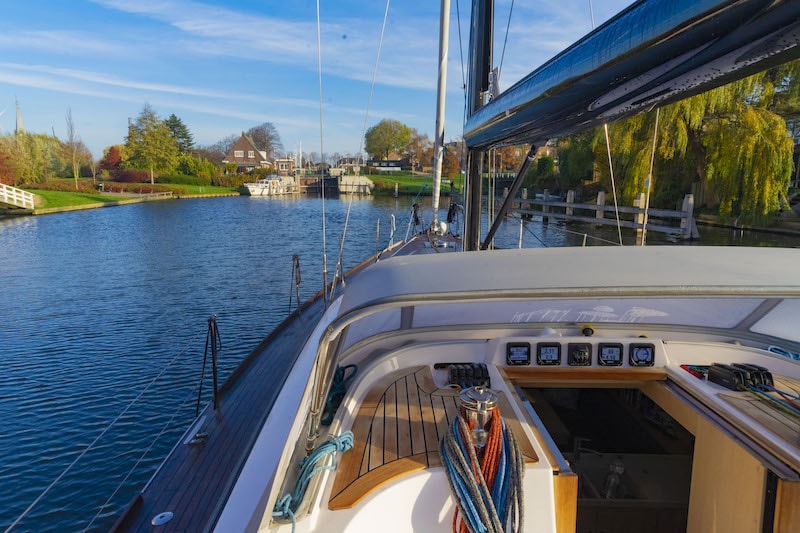
In this case, the boat is rigged with a carbon mast, in-boom furling mainsail, carbon boom and a mainsail sheet circuit that goes directly to a cockpit-mounted central winch.
More and more frequent on maxi yachts, this solution, when applied to boats of this size, combines sporty performances and extraordinary easy handling.
A low-overlapping jib, 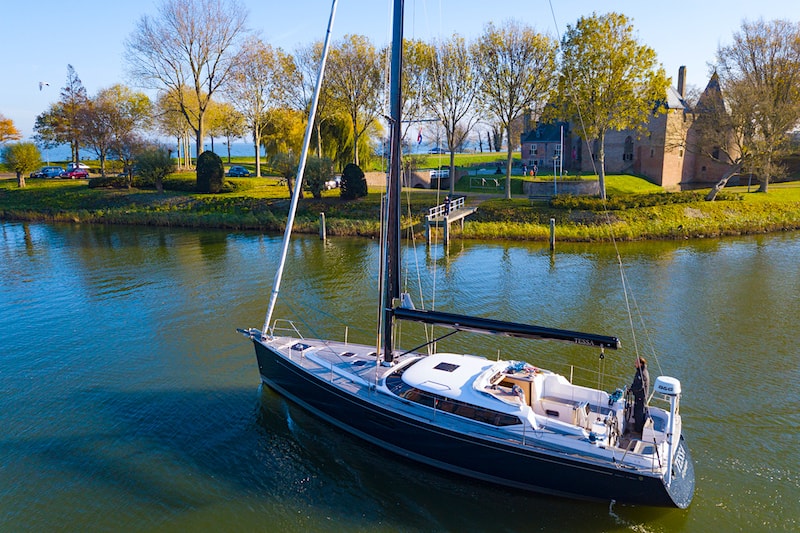
We sail between houses that look like something out of a storybook to Radbound Castle that, in its beauty, marks at the same time the exit of the Port of Medemblik and our entry to the IJsselmeer.
A light breeze makes the water ripple while the mainsail is hoisted by Marcel Offereins who, thanks to the duplication of the electric mainsail winch switch, performs the maneuver autonomously and effortlessly from the starboard helm station. We slightly bear away, unfurl the jib and stop the engine.
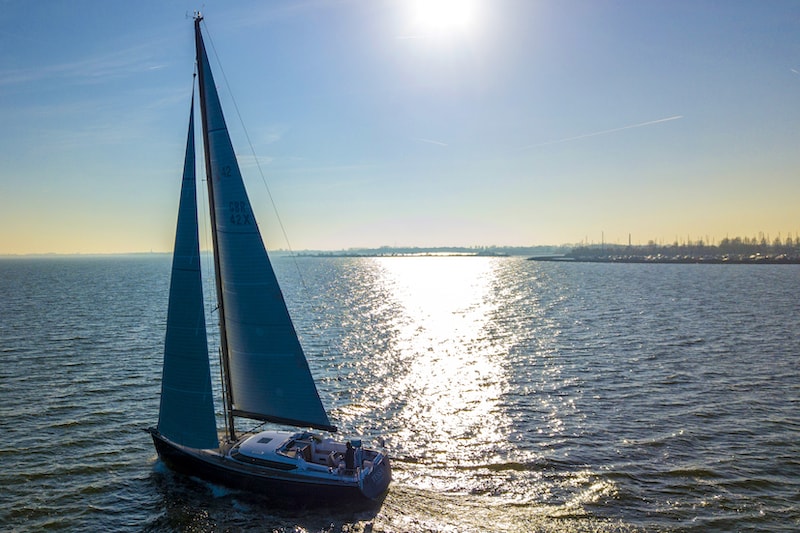
Georg Nissen must have been particularly inspired when he designed the hull lines of this yacht.
We perform a series tacking that Tessa faces without hardly slowing down; then, the sea seems to get darker, winds energy increases and, like a gift from the heavens, it stabilizes at 9-10 knots of true wind, which represents the perfect conditions for our sea trial.
We try to hug the wind and the 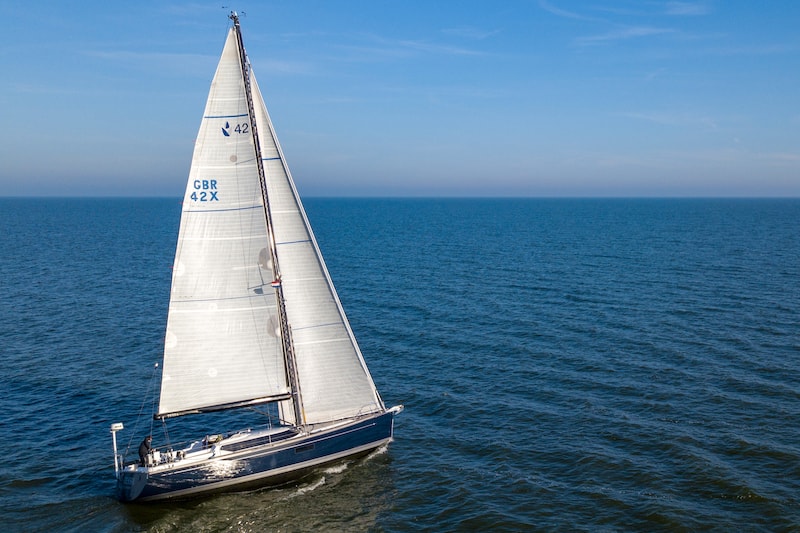
While we sail, I suddenly realize that I’m standing in the cockpit with a notebook in my hand while I’m writing down. The stability of this boat is striking. I must steer her, now!
So, I leave my notebook and Marcel lets me take the wheel. I sit on the leeward side, I put my hands on the helm and, instantly, I start to “feel” Tessa.
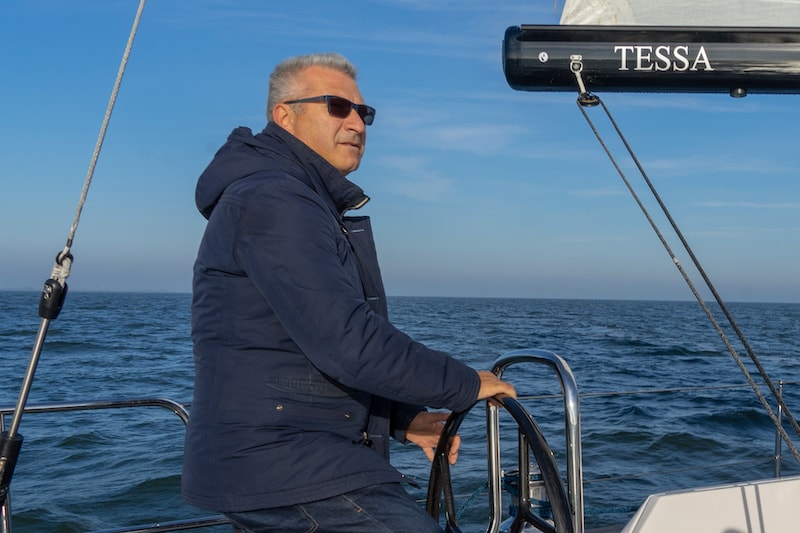
Slight variations on the wheel are enough to make the play reverse and, equally instantly, make the bow turn by that tenth of degree we had just figured to give to our current course.
The sensation I feel is very similar to the amazing one that, until today, I thought it was possible only with a tiller bar rudder and that, on this boat, is even more refined because this hull is stable, progressive and never nervous.
A motorboat passes 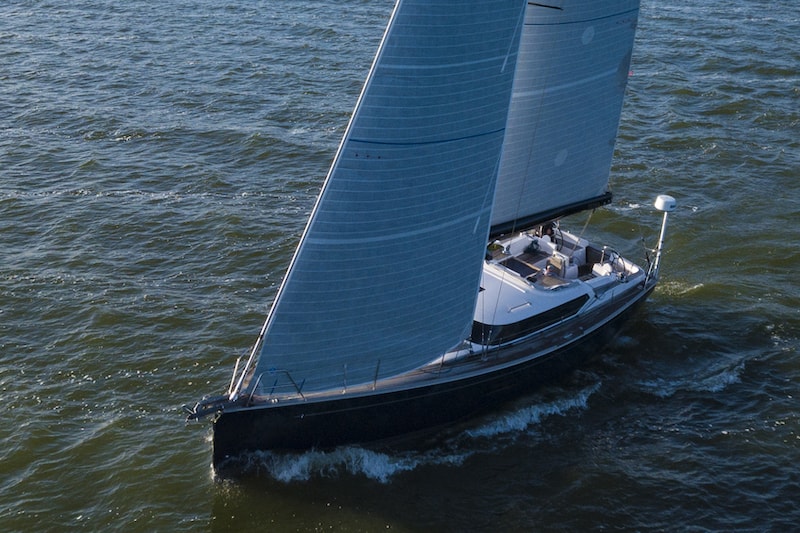
I bear away a little and start to go down at 70 degrees from the apparent wind and, while the angle of the true wind is well above 100 degrees, our Contest 42CS keeps running at 7 knots. Slowing further, despite the 105% jib, speeds remain relatively high and Tessa seems not to want to stop. With a gennaker on board, this yacht can certainly eat up many miles a day, regardless of wind direction.
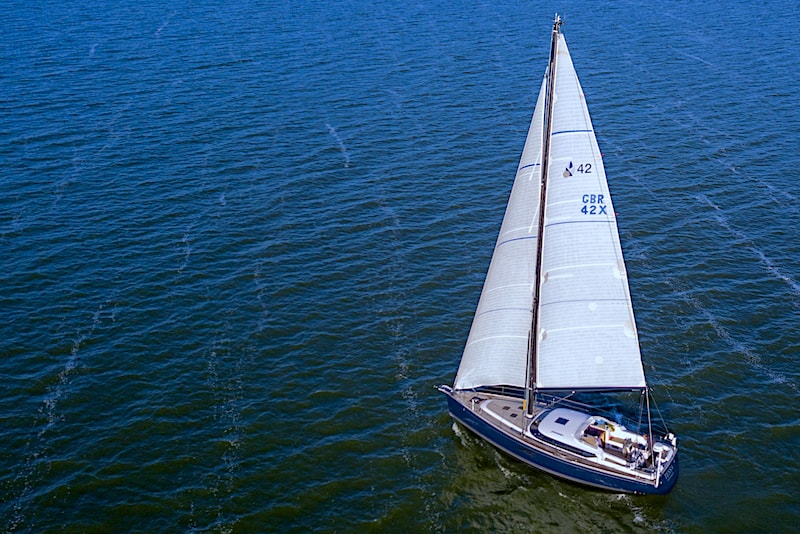
Reluctantly, I give the wheel back to Marcel and, while we sail close-hauled at about 8 knots, I go to ceck how sailing experience is from the perspective of passengers. It goes without saying that, on a sailboat like this, there’s no shortage of handrails and you can move from a point to another in total safety. Nevertheless, I move without the need to find a handhold or to lean against something to find a balance that, vice versa, Tessa gives me herself with her safe gait.
Benches in 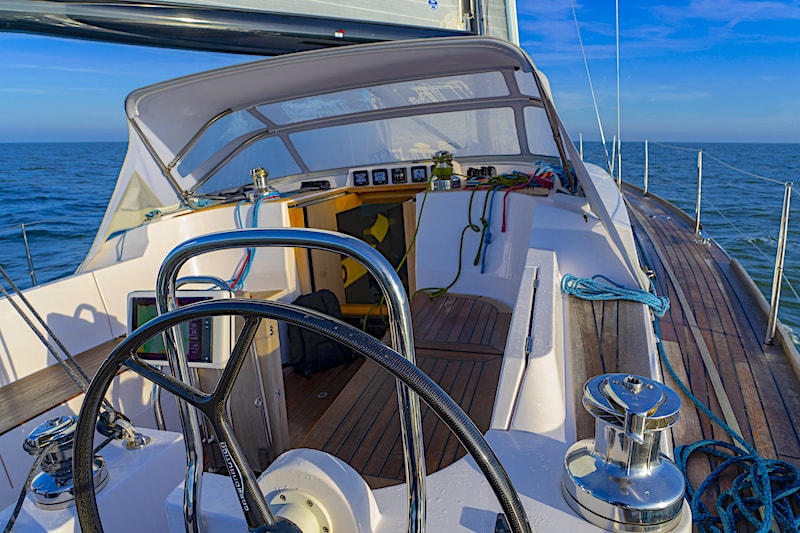
I stand up, I reach the hatchway and start to climb down. Steps feature raised ends with an angle that corresponds to the ideal close-hauled; in short, when climbing down, your feet lean on a flat safe surface.
When I arrive in the ward-room, again, the Contest 42CS astonishes me. In the dinette, silence is absolute, no creak is audible, nothing moves and, above all, water lapping along the hull is absolutely silent.
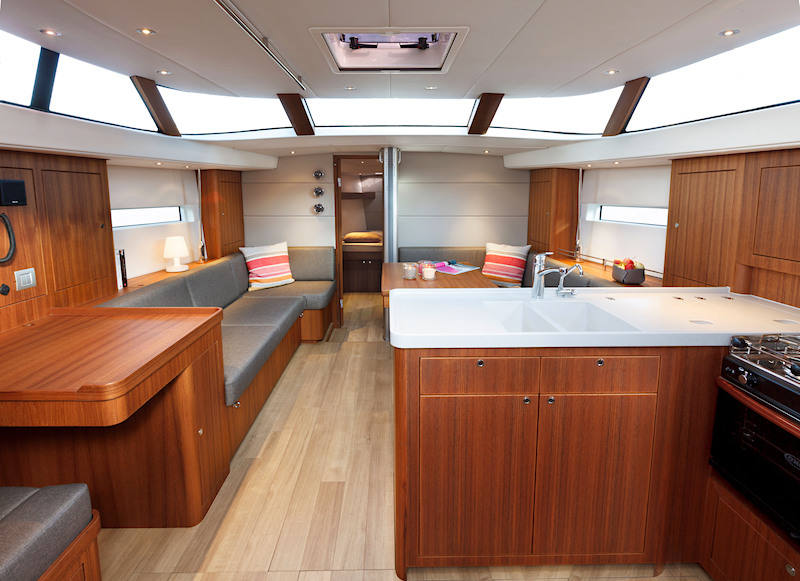
While I’m sitting, the details of the boats I had seen under construction in the shipyard come to my mind in the form of pictures and everything becomes clearer.
Structural rigidity, sound and thermal insulation are all advantages that result from a construction technology that Contest Yachts uses for all its boats, large and small.
Building quality, attention 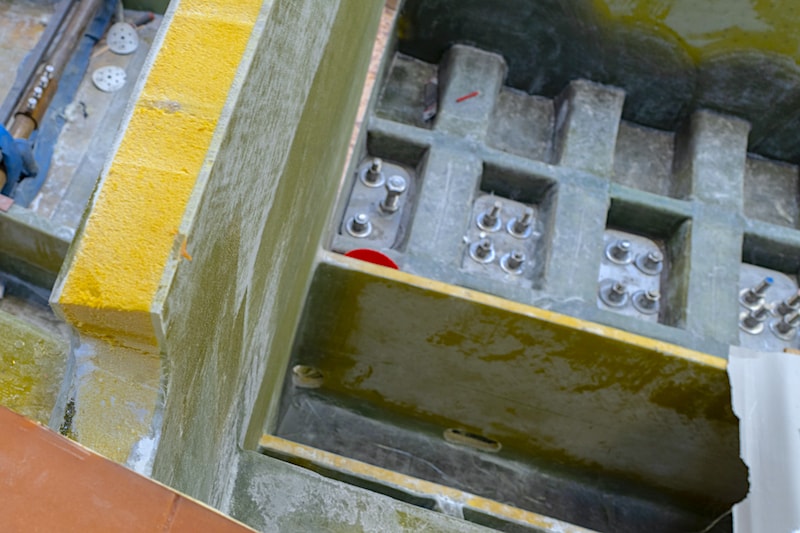
I go back in the cockpit and I enjoy the last minutes of navigation; then, when it is time to go back, maybe as a mark of respect or maybe to appease the displeasure to leave a boat like this, wind energy, too, decreases and comes to greet our entry into the port.
Performances under sail
2 passengers aboard – fuel capacity at 100% – water capacity at 50% – laden boat in cruising trim – true wind from 7 to 10 knots – almost calm/slightly rough sea
Feedback
Technically speaking, we could consider the Contest 42CS as a highly versatile sailboat capable to stand out both in club races and for recreational purposes.
Stable, comfortable and fast at all speeds, she can sail many miles a day that, combined with a livability that is typical of larger boats, undoubtedly earn her the definition of “blue water cruiser”.
The possibility to customize the deck plan extensively, adapting it to the various owner’s needs, makes this boat a definitively perfect yacht.
Contest Yachts : that’s how boats are built
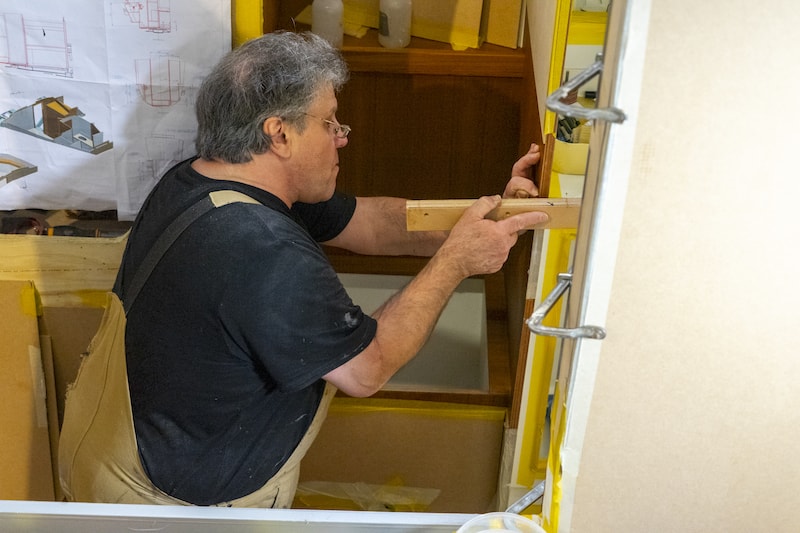
This is why the shipyard combines technologically advanced building technologies, including Conyplex vacuum infusion system®, and handcrafted production of the most important parts, where the expertise of its boat-builders makes a tangible difference.
A clear example of this is furniture that, not only is manufactured in accordance with best practice, but is also positioned with a precision and a care that don’t fear the judgement of the time.
The teak deck 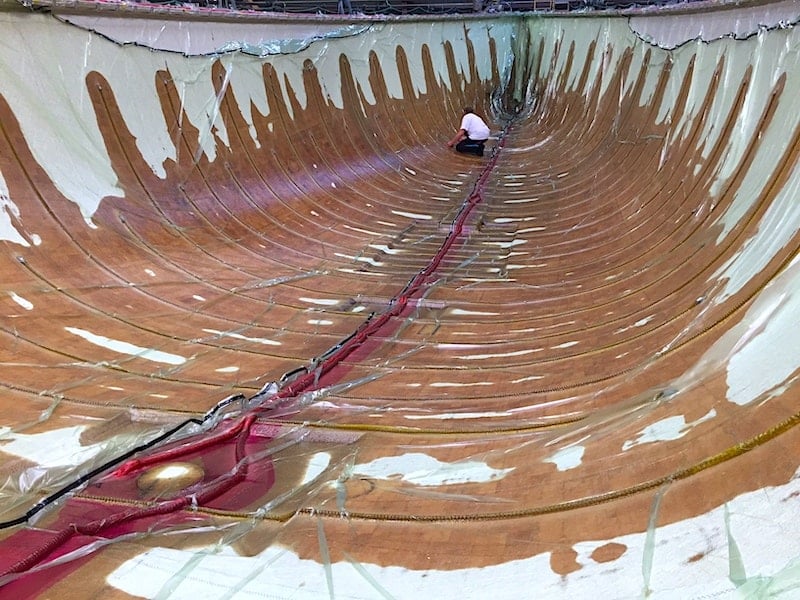
All materials used, wood essences, fittings and equipment are high-quality. Electric systems are oversized and therefore safe.
Hull construction deserves a separate chapter. On the one had, we have the famous vacuum infusion system developed by Conyplex that, through a 24-hour process, completely removes air while reducing resin percentage to 30%, with a clear advantage in terms of weight and sturdiness, considering that the fiber gives strength to the hull.
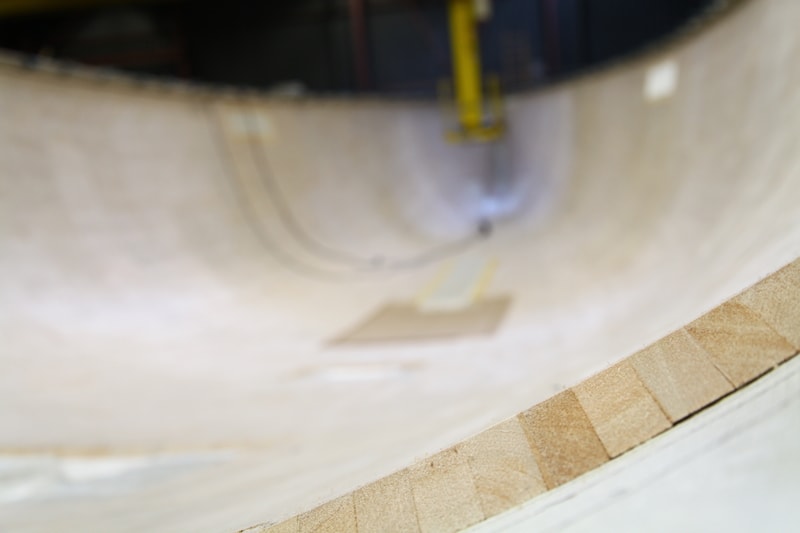
The combination of these two techniques results in the construction of boats that are extraordinarily sturdy, comfortable and practically free from any osmotic phenomena.
But what has impressed me the most about this shipyard is how the quality standard and the reckless attention to details used in the construction of the flagship are used for the construction of the smallest of the range in exactly the same way.
Maybe that’s why to sail on board this Contest 42CS inevitably tends to create an addiction that it is very difficult to extinguish.
Unless we’re back to test another Contest, of course…
Contest Yachts
Overleek 5
1671 GD Medemblik
The Netherlands
tel +31 227 543 644

